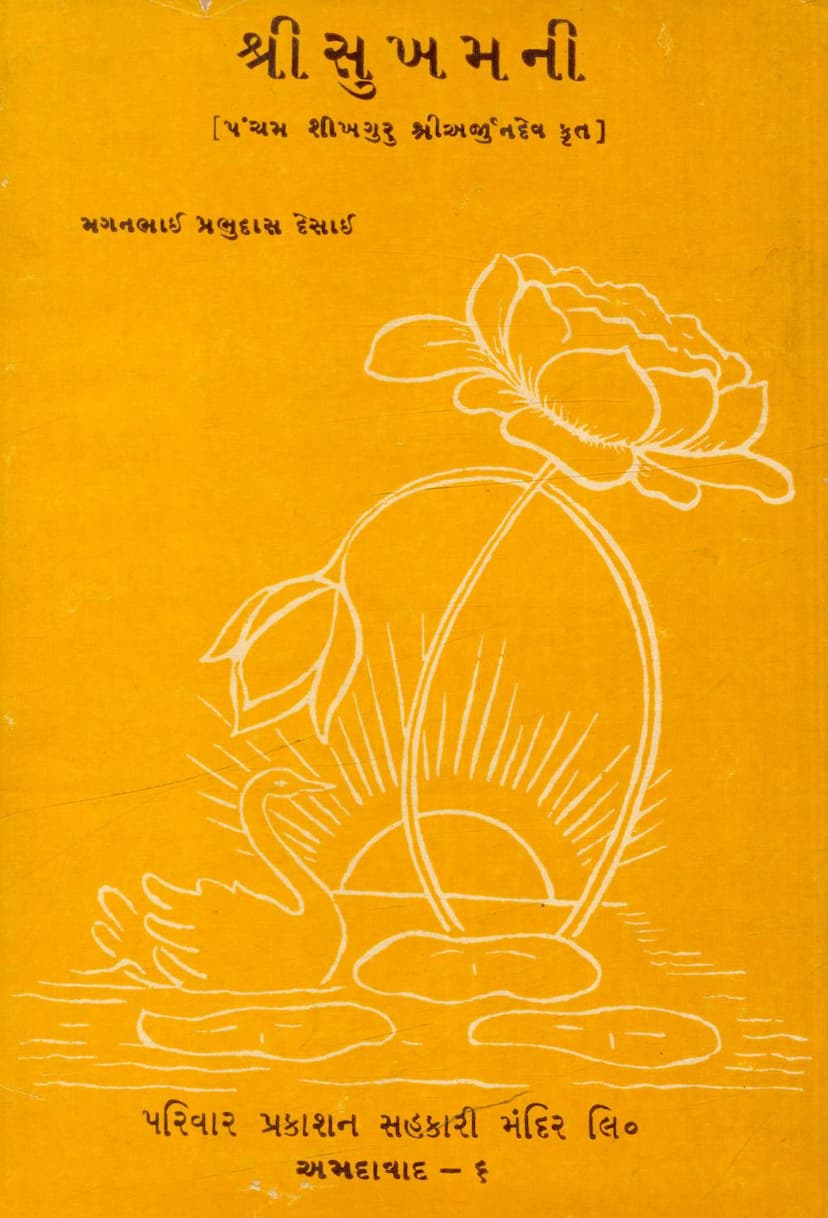Sukhmani
Added to library: September 2, 2025

Summary
Here's a comprehensive summary of the Jain text "Sukhmani" by Maganbhai Prabhudas Desai, based on the provided pages:
Title: Sukhmani Author: Maganbhai Prabhudas Desai Publisher: Parivar Prakashan Sahkari Mandir, Ahmedabad Catalog Link: https://jainqq.org/explore/032277/1
Overview:
The book "Sukhmani" is a Gujarati translation and commentary on the "Sukhmani" scripture, a significant work by the fifth Sikh Guru, Guru Arjan Dev. Maganbhai Prabhudas Desai undertook this translation and commentary, aiming to make the original Punjabi text, its meaning, and its exposition accessible to Gujarati readers. The publication includes the original text, its Gujarati prose translation, and detailed explanations.
Key Themes and Content:
-
The Essence of Sukhmani: The book's central theme revolves around the concept of "Sukhmani," which translates to "peace of mind" or "joy of the mind." The author, Maganbhai Desai, refers to it as a "saga of peace and joy." Guru Arjan Dev is described as having poured his inner soul into "Sukhmani," expressing his profound connection with the universal soul and the oneness of humanity. The work is seen as an offering from a poet's heart to the supreme being.
-
Guru Arjan Dev's Vision: Maganbhai Desai presents Guru Arjan Dev in four dimensions: as an administrator, a poet, a visionary of synthesis and harmony, and a traveler of dharma. He is deeply impressed by the Guru's multifaceted greatness. The Guru's own heart was filled with the peace derived from the divine presence, making "Sukhmani" a reflection of this inner state.
-
Significance and Impact: The book highlights the profound impact of "Sukhmani," comparing its importance to the Bhagavad Gita. Professor T.L. Vaswani is quoted, suggesting that both books are essential readings for every young Indian, promoting a broader nationalistic sentiment.
-
Maganbhai Desai's Contribution:
- Inspiration and Dedication: Maganbhai Desai's work on "Sukhmani" was inspired by Mahatma Gandhi. Gandhi, having read a small portion of Guru Nanak's "Japji" (another significant Sikh scripture), suggested to Maganbhai that it should be shared with Gujarati readers. This led Maganbhai to translate and present these Sikh scriptures in Gujarati.
- Detailed Translation: The translation is comprehensive, including the original text, word-for-word meaning, prose translation, and commentary.
- Historical Context: The book provides a historical introduction to the Sikh faith and the life of Guru Nanak Dev.
- Evolution of the Translation: The publication details the evolution of the translation. Initially, Maganbhai aimed for a poetic translation but later decided that a prose translation alongside the original text would be more beneficial for understanding. This task was entrusted to Gopal Das Patel.
-
Content of Sukhmani (as described):
- Structure: "Sukhmani" consists of 24 "Ashtapadis" (sections of eight verses), each preceded by a "Slok" that sets the theme. Each Ashtapadi is composed of ten verses. The name "Nanak" often appears at the end of verses, signifying the belief that subsequent Gurus embodied the spirit of the first Guru, Nanak.
- Spiritual and Philosophical Depth: The text delves into the remembrance of God's name, its power to alleviate suffering, overcome obstacles, conquer death, and bestow spiritual wealth. It emphasizes the supremacy of God's name over rituals, pilgrimages, austerities, and even the study of scriptures.
- Ethical and Moral Guidance: The "Ashtapadis" offer guidance on living a virtuous life, including the importance of humility, detachment from worldly desires, self-control, contentment, and the eradication of ego, anger, and greed.
- The Role of the Guru and Sangat (Congregation): The book stresses the significance of the Guru's guidance and the company of saints (sangat) in achieving spiritual progress and understanding the divine.
-
Historical Context of Guru Arjan Dev: The summary includes biographical details about Guru Arjan Dev, his lineage, his role in compiling the Guru Granth Sahib, the construction of the Harmandir Sahib (Golden Temple), and his ultimate martyrdom. His martyrdom is presented as a sacrifice for preserving the sanctity of the Sikh scriptures and faith against oppressive forces. The narrative highlights his unwavering faith and his teaching of patience, forgiveness, and resistance to injustice through peaceful means, even in the face of extreme persecution.
-
Purpose of the Publication: The publisher aims to make this important work accessible to Gujarati readers and the Sindhi-Punjabi community settled in Gujarat, bridging linguistic and cultural divides.
In essence, "Sukhmani" as presented by Maganbhai Prabhudas Desai is not just a religious text but a guide to a life of peace, joy, ethical conduct, and spiritual realization, deeply rooted in the teachings of the Sikh Gurus and presented with meticulous scholarly effort for the Gujarati audience.